I will always remember the saying, “Old Soldiers never die, they simply fade away”, made immortal by U.S. General Douglas MacArthur during his farewell address to the U.S. Congress on April 19, 1951. A very popular war hero he was asked to step down by President Harry S. Truman for what was considered his insubordination during the Korean War. There have been a couple of such personalities also in our midst who quietly disappeared from the scene after contributing immensely to the change brought about in Nepal after 1951 A.D. Major General Mahabir Shumsher J. B. Rana is one such towering personality.
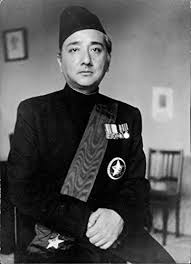
As children we used to hear the names of Subarna Shumsher and Mahabir Shumsher bandied about the house as the main people behind the revolution in Nepal that was successful in ousting the 104 years old Rana oligarchy. They were aristocrats bankrolling the nascent democratic movement that started in India after Indian Independence with the aim of bringing about political change in Nepal. Political leaders such as the Koirala brothers had the organizational skill but not the financial resource to achieve their goals. When the Nepali Congress Party was formed in Calcutta in 1950 A.D. the leaders approached Subarna Shumsher for financial assistance to the tune of 25-30 Lakh Rupees. How can one start a revolution with this paltry amount asked Subarna rhetorically and told them that both he and Mahabir had decided to invest One Crore (10 million) Rupees each in the enterprise as related by Shri Ganesh Man Singh (G.M.S Foundation Newsletter 15 May, 2020).
Let us examine why these scions of the Rana family were in fact fomenting a revolution against their own kith and kin. During the era of Maharajah Chandra Shumsher Jung Bahadur Rana, the second longest ruling Rana prime minister, a new Roll of Succession was drawn and the family was categorized into three classes – A, B, and C – a categorization the English writer and sycophantic biographer of Maharajah Chandra, Percival Landon, reportedly helped draw. The family was getting too large as the Maharajahs had many wives. “A” Class denoted those born of high caste married wives and were eligible for the roll of succession. “B” denoted children born of secondary high caste wives and those born from alliances with princesses from the royal household. “C” were children from junior wives, albeit in many cases these wives too were elevated to the rank of “Maharani”, they were not eligible to be enrolled for succession.
Commander-in-Chief Rudra Shumsher Jung Bhadur Rana was the eldest son of Maharajah Bir Shumsher from his second wife Tope Kumari Devi. He and rest of his brothers had been elevated to the rank of “A” when Bir passed this move through with the concurrence of the Privy Council (Bharadari Sabha). Likewise Maharajah Bhim Shumsher had also elevated his sons, Hiranya Shumsher and Prakash Shumsher, from his second wife to “A” class. This move had created seismic waves in the prevalent Roll of Succession and the sons of Maharajah Chandra were displeased. Hiranya suddenly superseded Baber Shumsher! When Juddha Shumsher succeeded Bhim as Maharajah and prime minister of Nepal there was considerable pressure applied on him to act and remove these late additions to the Roll of Succession. After Juddha his generation would pass and succession would then go to his nephews. It had made him uneasy and he had lost much sleep over it. Rudra was a close confidante and a childhood friend as they were of similar age, uncle-nephew relationship notwithstanding.
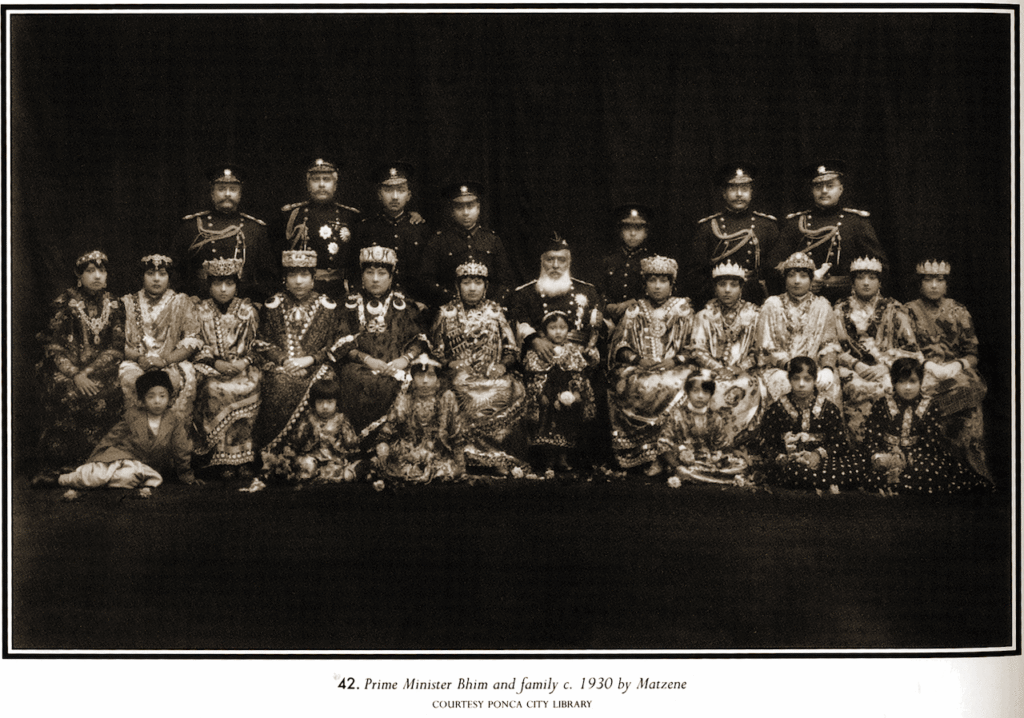
Colonel Prakash Shumsher, son of Bhim Shumsher died young from spinal injury after suffering an accident leaving behind a very young son Mahabir. Rani Tek Kumari Devi brought up her son with loving care. Grandfather Bhim Shumsher built for him Mahabir Bhawan in Naxal (present-day Police Headquarters) even before Bhim moved to Singha Durbar as prime minister. Mahabir Shumsher was married to Rani Padma Kumari, a marriage that was arranged by Rani Tek Kumari and her foster brother Shri Lalit Chand, who would later become the Chairman of the Rashtriya Panchayat. She was initially kept as a “Dola” in Tangal Durbar by Prime Minister Bhim Shumsher as was the custom of the time. They were married in 1930 A.D. She gave birth to Gita, their only child.
In March 1934 A.D. during a full ceremonial Durbar Maharajah Juddha unexpectedly announced the removal of his successor Commander-in-Chief Rudra from the Roll of Succession together with the sons of Maharajah Bhim Shumsher from his second wife by making the Rule of Succession retro-active. Armed guards quickly disarmed Rudra and stripped him of his stripes. He was to be exiled to Palpa and his assets in the valley nationalized. Padma Shumsher was then elevated to the post of Commander-in-Chief of the Nepalese Army. General Hiranya Shumsher was given the post of Governor of Dhankuta, his son Subarna, and son of Prakash Shumsher, Mahabir, chose to leave Nepal and start their new lives in Calcutta as entrepreneurs and high-flyers.
Mahabir Shumsher was in his element in Calcutta, far away from the restrictive life of home. He invested in Calcutta in real estate and many other business enterprises. He lived a flamboyant life from his base at Alipore House, a famous address for Nepalese visitors to Calcutta at the time. He had under his control some 45 companies in India, chief among these were Dalhousie Properties, Humayun Properties, Lighthouse Cinema and Tiger Cinema. He also started Himalayan Aviation – initially in partnership with Subarna Shumsher in 1948 and would take over as sole proprietor later – an airline company that would eventually merge with Indian Airlines. A DC-3 of Himalayan Aviation was the first aircraft to land in Gauchar airport in Kathmandu. He was a regular patron of the social scene of Calcutta as famously represented by Calcutta Club, 300 Club started by the legendary Boris Lissanovitch who would later run the Hotel Royal in Kathmandu, and a renowned restaurant with live music on Saturdays called Firpo’s started by an Italian. Mahabir Shumsher loved horses and horse racing. He was a highly respected member of the Calcutta horse racing scene and owned many prize winning horses competing in the local races such as Queen’s Cup, Invitation Cup and 2000 Guinea Stakes.
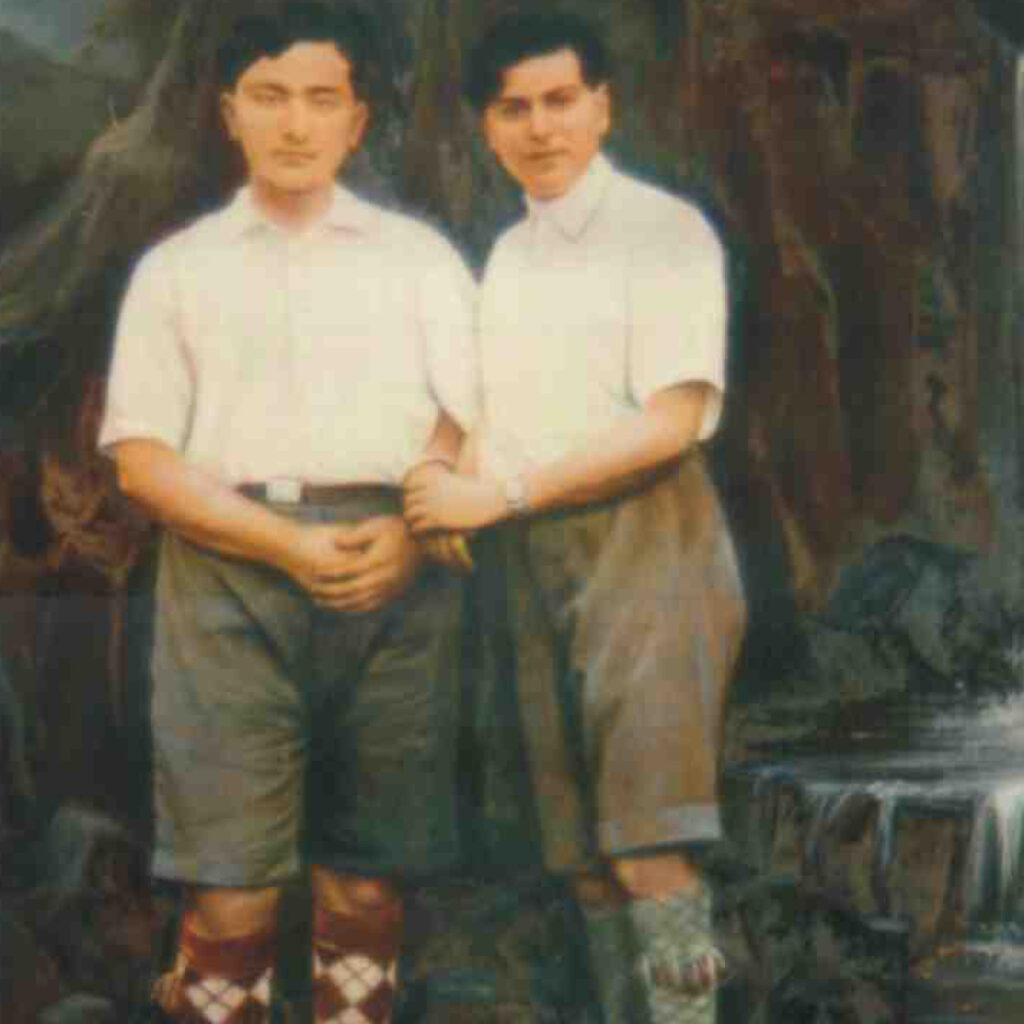
Major General Mahabir was a close friend and confidante of the powerless King Tribhuvan Bir Bikram Shah who was seething under Rana rule. When the king got his opportunity to leave for Calcutta on medical grounds, it was Mahabir who he sought after to get briefed on the rumblings of the independence movement that was gathering storm. This had to be done surreptitiously not to arouse suspicion of the ruling clique back home. This reunion with a friend must have bolstered the confidence of the king to chart out his own agenda back home. In 1947 Nepali Democratic Congress Party was started by Subarna Shumsher and Mahabir Shumsher with a goal to end the Rana Regime in Nepal and help usher in a new era of democratic governance by peoples’ representation with a sovereign king as head of state. Mahendra Bikram Shah was its president. Regular party meetings would be held at Tiger Cinema. In 1950 Nepal National Congress Party led by the Koirala brothers Matrika and Bisheshwor, Ganesh Man Singh and others merged with the Nepali Democratic Congress Party to form the Nepali Congress Party. The merger talks were held in Mahabir Shumsher’s Tiger Cinema from 8 to 10 April, 1950. Matrika Prasad Koirala was nominated the president of the party. The manifesto of the party adopted a resolution to initiate People’s Revolution in Nepal to bring about democratic reform.
It was during this period that an armed insurgency was initiated in various parts of Nepal. Himalayan Aviation of Mahabir Shumsher took central stage. A DC-3 piloted by a Polish air-force pilot Bujakovsky was used to ferry WWII vintage Sten guns and Bren guns from Burma and drop them at an unused airport at Bihta, 30 km west of Patna. Propaganda leaflets advocating democracy were also dropped from his aircraft at various points in Nepal across the border from India.
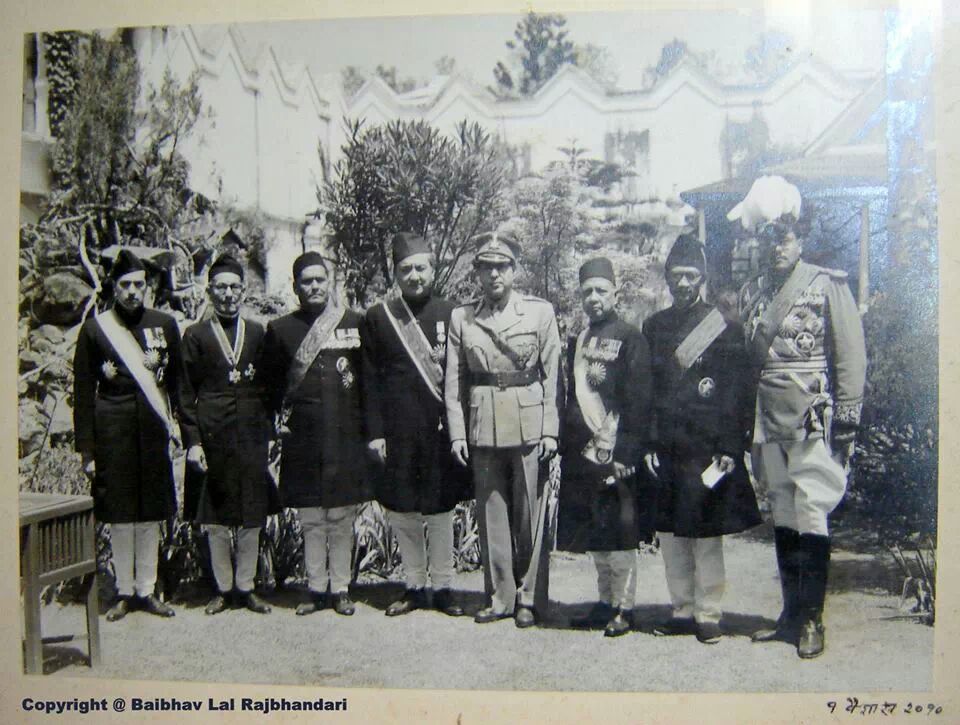
King Tribhuvan with his Advisory Council, 1954 A.D.
(L-R) Sharda Shumsher, Manik Lal, Maj. Gen. Surendra Bahadur Basnet, Mahabir Shumsher, King Tribhuvan, Kaiser Shumsher, Khadga Man Singh, C-in-C General Kiran (my father)
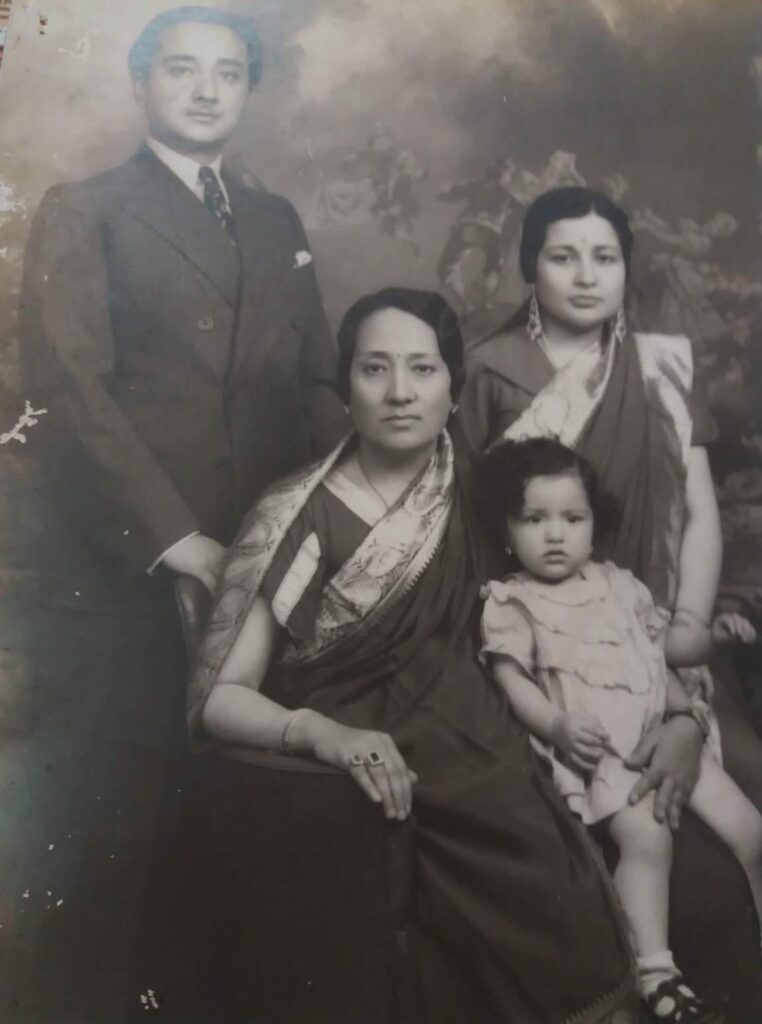
Major General Mahabir with mother Rani Tek Kumari,
wife Padma Kumari and daughter Gita
Finally the ruling Rana clique embarked on a path of reconciliation brokered by New Delhi. In December 1950 India procured an agreement between the Nepali Congress, the King, and the Rana rulers. The Ranas accepted the Indian proposal on January 8, 1951 followed by a cease-fire order by the Nepali Congress on January 16, 1951.King Tribhuvan arrived in Kathmandu from Delhi on February 15, 1951 and made null and void the Royal Seal (Lal Mohar) his ancestor had bestowed on the hereditary Rana regime and abrogated the title of Maharajah of Kaski and Lambjung. He made a proclamation on February 17, 1951 committing that “the people be ruled by a democratic constitution framed by a constituent assembly elected by the people.” Rana rule in Nepal had come to an end. It couldn’t have happened without the active participation of and support to the cause of democracy provided by people like Field Marshall Rudra Shumsher, Major General Subarna Shumsher and Major General Mahabir Shumsher. That is how legends are made!
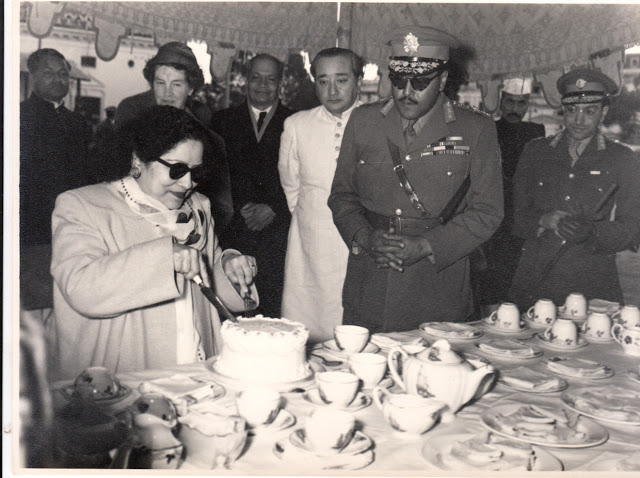
Queen Kanti Rajya Luxmi Devi cutting a cake with C-in-C General Kiran (my father), Mahabir Shumsher in white sherwani, and Prince Himalaya Bikram Shah (behind my father) attending


